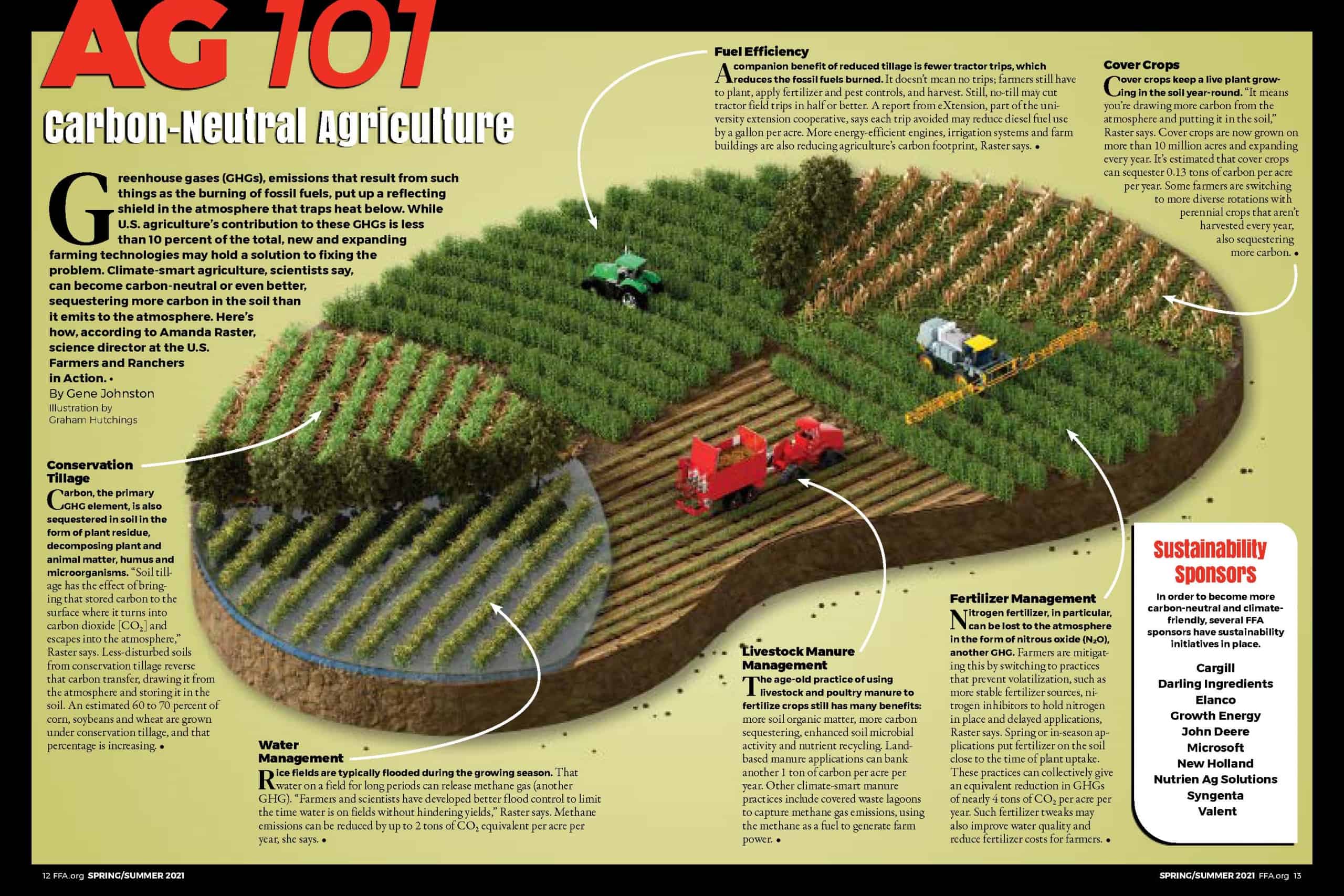Greenhouse gases (GHGs), emissions that result from such things as the burning of fossil fuels, put up a reflecting shield in the atmosphere that traps heat below. While U.S. agriculture’s contribution to these GHGs is less than 10 percent of the total, new and expanding farming technologies may hold a solution to fixing the problem. Climate-smart agriculture, scientists say, can become carbon-neutral or even better, sequestering more carbon in the soil than it emits to the atmosphere. Here’s how, according to Amanda Raster, science director at the U.S. Farmers and Ranchers in Action.
Conservation Tillage
Carbon, the primary GHG element, is also sequestered in soil in the form of plant residue, decomposing plant and animal matter, humus and microorganisms. “Soil tillage has the effect of bringing that stored carbon to the surface where it turns into carbon dioxide [CO2] and escapes into the atmosphere,” Raster says. Less-disturbed soils from conservation tillage reverse that carbon transfer, drawing it from the atmosphere and storing it in the soil. An estimated 60 to 70 percent of corn, soybeans and wheat are grown under conservation tillage, and that percentage is increasing.
Water Management
Rice fields are typically flooded during the growing season. That water on a field for long periods can release methane gas (another GHG). “Farmers and scientists have developed better flood control to limit the time water is on fields without hindering yields,” Raster says. Methane emissions can be reduced by up to 2 tons of CO2 equivalent per acre per year, she says.
Fuel Efficiency
A companion benefit of reduced tillage is fewer tractor trips, which reduces the fossil fuels burned. It doesn’t mean no trips; farmers still have to plant, apply fertilizer and pest controls, and harvest. Still, no-till may cut tractor field trips in half or better. A report from eXtension, part of the university extension cooperative, says each trip avoided may reduce diesel fuel use by a gallon per acre. More energy-efficient engines, irrigation systems and farm buildings are also reducing agriculture’s carbon footprint, Raster says.
Cover Crops
Cover crops keep a live plant growing in the soil year-round. “It means you’re drawing more carbon from the atmosphere and putting it in the soil,” Raster says. Cover crops are now grown on more than 10 million acres and expanding every year. It’s estimated that cover crops can sequester 0.13 tons of carbon per acre per year. Some farmers are switching to more diverse rotations with perennial crops that aren’t harvested every year, also sequestering more carbon.
Livestock Manure Management
The age-old practice of using livestock and poultry manure to fertilize crops still has many benefits: more soil organic matter, more carbon sequestering, enhanced soil microbial activity and nutrient recycling. Land- based manure applications can bank another 1 ton of carbon per acre per year. Other climate-smart manure practices include covered waste lagoons to capture methane gas emissions, using the methane as a fuel to generate farm power.
Fertilizer Management
Nitrogen fertilizer, in particular, can be lost to the atmosphere in the form of nitrous oxide (N2O), another GHG. Farmers are mitigating this by switching to practices that prevent volatilization, such as more stable fertilizer sources, nitrogen inhibitors to hold nitrogen in place and delayed applications, Raster says. Spring or in-season applications put fertilizer on the soil close to the time of plant uptake. These practices can collectively give an equivalent reduction in GHGs of nearly 4 tons of CO2 per acre per year. Such fertilizer tweaks may also improve water quality and reduce fertilizer costs for farmers.
Sustainability Sponsors
In order to become more carbon-neutral and climate-friendly, several FFA sponsors have sustainability initiatives in place.
- Cargill
- Darling Ingredients
- Elanco
- Growth Energy
- John Deere
- Microsoft
- New Holland
- Nutrien Ag Solutions
- Syngenta
- Valent












